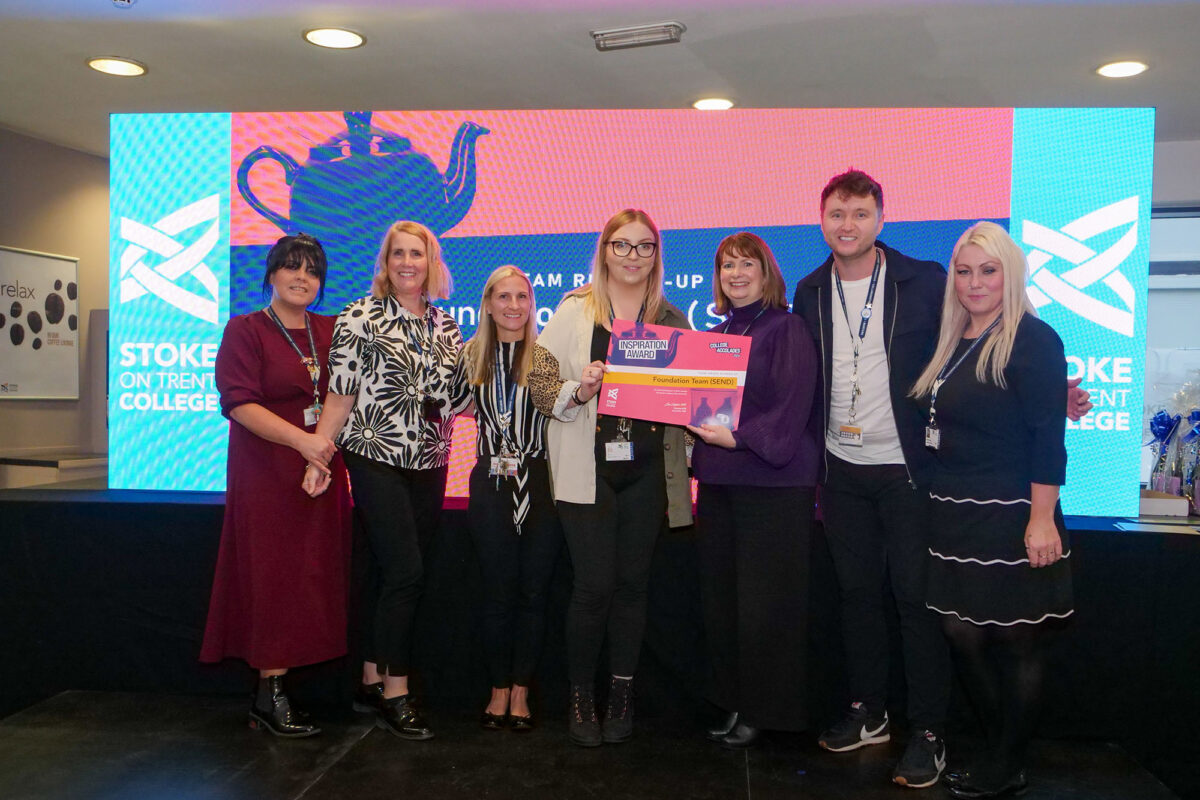Role of Quality Assurance In Driving Growth For eLearning Industry

Over the years, the concept of education and learning has transformed to a great extent. Especially, the alarming situations caused by the pandemic have made eLearning software gain explosive popularity. From students to skill-building enthusiasts, users across the globe are leaning towards LMS platforms to ensure uninterrupted learning.
According to Global Market Insights, the eLearning market was measured to stand at $250 billion in 2020, while the growth statistics have shown that it is likely to reach the 1 trillion mark, in the next 6 years.
Since the world is striving for greater knowledge, eLearning software development has become a highly competitive process. And therefore, it is extremely important that any solution made to help learning enthusiasts in knowledge building should be tested for the highest benchmarks of quality.
More importantly, relevance and consistency are the primary requirements for the engagement of any educational software. Hence, the quality issues in eLearning arise when these requirements are not met leading to loss of trust and educational efficiency.
In this blog, we will try to highlight how necessary Quality Assurance has become for eLearning and necessary testing techniques that could aid in creating the quality assured educational platforms of the future.
eLearning Software Testing for Quality: What Makes It Different?
Testing of eLearning solutions is now in high demand. It is because eLearning testing checks for extensive functionality and performance issues in the edtech software/applications. These checks begin right from the use of visual content to planning examinations, pairing interactive material, and overall definition of courses.
Running quality assurance tests for eLearning software even need testers to consider the learnability factor, which needs further checks on accessibility, usability, and experience. Inability to streamline any of these factors could cause friction between the learner and the platform that may lead to the risk of losing out to competitors.
Common Challenges With eLearning Solutions
The common challenges with developing an eLearning software or LMS are distilled into several different areas. Let’s dig to the various challenges that need to be solved to assure quality solutions to the readers:
- Adaptability: The primary challenge that most eLearning companies tend to face is creating a product that is easy to adapt to. It is challenging to create a solution that can cater right content to the desired audience in the right manner.
- Navigation: Once done with the idea of content and platform adaptability, the next big challenge to take is navigation. It usually refers to defining the path to process plus the ease with which the users could navigate on the LMS to fetch the content they need.
- Engagement: Adaptability and navigation are primary requisites. But one factor that defines the success of any eLearning software is engagement. And to gain high engagement rates, it is important to make sure that technology can communicate well, platform can offer unique and valuable content, along with the simplified elearning journey in a personalized manner.
- Functionality: Since functionality is all that makes an LMS usable and purposeful, functionality of the eLearning software must be crafted to offer maximum convenience to the users.
- Interactiveness: Last but not least, any LMS or eLearning software could only succeed in the market when it manages to offer maximum interactive elements to the users. It can be the use of audio, visuals, and video content on the software plus the ease of access with the content along with content quality.
How QA Helps To Curb These Challenges For Added Productivity?
To ensure maximum revenue with the eLearning software, developers and testers need to focus on different criteria that can help create a holistic environment for running the application. This means creating a highly learnable experience for users through the highest workability of the application.
However, achieving such benchmarks need rigorous testing and the development of test suites along with creating an optimum user experience. Also, it becomes necessary to make the solution compatible with any future technology updates related to security or performance to align with eLearning trends from the future.
Let us have a quick sneak peek into the essential testing types that one must target in order to allow maximum learnability and user engagement:
- Functional Testing can be done at the initial stages of the project as every build shared by the development team should run for a check on functionalities surrounding audio, video, and other course material.
- Multi-browser Testing can be done to ensure the proper functioning and accessibility of the developed software or application across various browsers, devices, and platforms.
- Localization is all about availing the content to the users as per their geographical region. This means the LMS should be tested for its accountability and consistent response, irrespective of the region or country to ensure maximum interactiveness and engagement.
- Compliance Testing allows a product to offer maximum interoperability between different content and platforms. Besides, compliance testing involves the use of SCORM standardization and specifications surrounding the sharable content available on the eLearning solution.
Implement Quality Assurance Best Practices To eLearning Solutions
With concurrent user activity turning more prominent, users demand high-performing online software platforms. Any glitches or lack of responsiveness to the system could cause the loss of learning, loss of brand reputation, and in certain cases, platform jeopardy.
Online learning management space needs testers to run quality checks that can avoid high-stress conditions like usage during peak hours, high user load conditions, etc. Thus, the process might involve incorporating the eLearning software testing best practices that can help achieve high-performing solutions.
Design Best Practices
Since User Experience needs to be crafted in the first place, the QA team needs to put their focus on documenting all the factors that might disturb the design expectations. Key points to consider to make the best user experience:
- Create an intuitive experience
- Have a similar layout throughout the website
- Ensure all the course material can be easily found.
- Ensure the software developed must support all media formats.
- Create an application that could aid cross-collaborations.
- Help learners engage well with the learning process.
Apart from this must consider the user experience of the tutor or administrator. Points to consider:
- Create an intuitive dashboard
- Easy update and removal of modules
- Easy upload of course material
- Prevent any file breakage with the media content
- Ease of access with learner data
- Ensure any documents submitted by learners should be accessed easily.
- Easy delivery of test results to the learners.
Performance Metrics Practices
Nevertheless, the present-day LMS or eLearning software is designed to offer convenience to the learners, which means no loading time or potential roadblocks that might affect the learning. With Performance testing, testers can work on speed, memory, devices, throughput, bandwidth, and response time. Some of the few important performances and stress metrics that are critical for the success of an educational platform include:
- Stress Testing: To check that the software should handle all the loads effectively while resisting any failures in case of increased activity.
- Load Testing: To check that system should meet the goals with response time, concurrent user support, and infrastructure sustainability.
- Capacity Testing: To ensure the system could handle all the traffic and defined performance SLAs.
- Endurance Testing: To check that increased activity and load for a long time could be converted to the maximum throughput.
Quality Parameters
The only way to meet all the quality benchmarks without compromising on time and costs is by bringing automation into the picture.
Automation testing allows testers to reduce the tasks of Testing from months to weeks as anything related to exploratory testing and user experience validation could be handled well with ease. Also, automation could even provide more appropriate information on the tests that are repetitive and mundane.
All in all, automation testing could help offer great efficiency to the product with faster turnaround times and quality.
Compatibility Checks
Since all the learners or users do not have access to similar devices, browsers, and operating systems, it is vital that user experience across different devices must be tested. However, testing an application for a wide range of screen sizes, operating systems, devices, and browsers is difficult, but automation simplifies the entire process with highly precise results.
Automation can be done to work on the operational performance of the system along with multi-platform testing. Some of the few essential practices that you can aim with multi-platform testing could be listed as:
- Accessibility checking
- Functionality checks
- API checks
- Touchscreen capabilities
- GUI validation
The Crux
With time, the entire idea of learning has changed as more and more people are leaning towards online educational software applications. However, the inability deliver quality education solutions has immensely affected the after-market performance of edtech applications. On the flip side, some educational app development brands are struggling with stretched and thin QA teams making them attain the desired quality benchmarks in the shortest timeframes.
The situation only needs the technical stakeholders to understand the importance of QA in the LMS launch, and after-launch process as it would help brands to come up with more refined solutions based on QA best practices made for the eLearning industry.
Moreover, technology like automation, AI, and the use of various testing techniques could help testers to meet the high expectations of the users in the market without taking a toll on the investment grounds.











Responses